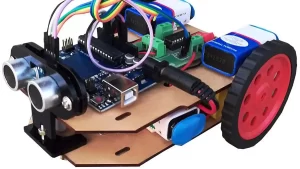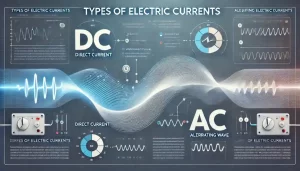- What is transducer? What are the selection criteria of transducer?
- What is thermistor? How it is used in Wheatstone Bridge?
- What is Light Dependent Resistor (LDR)? Explain with diagram
- How capacitive transducer works? Explain with diagram
- How Linear Variable Differential Transformer works? Explain its three cases
- How Piezo Electric Crystal works? What are the different axes of crystal?
Capacitive transducer is also known as pressure transducer. It is a passive transducer. It is used to measure external pressure and displacement also. It works on the principle of parallel plate capacitor. Now the capacitance of a parallel plate capacitor is given by –
C = (K.A. ε0) / d
Where,
K = dielectric constant
A = area of each plate in m2
d = distance between the two plates in m
ε0 = permittivity of free space

Principle of Capacitive Transducer
As per above formula, the capacity C of a capacitor is inversely proportional to distance d between two plates. Therefore, whenever the distance d changes, the capacitance C of the capacitor will change proportionally.
This principle is used in capacitive transducer. Consider following figure. Here the plate A is a thin & flexible metal plate and other plate is called static plate B fitted on lower part of enclosure. There is a heat isolation cavity below the two plates, to avoid temperature effects on the system.
When there is no pressure on plate A, the distance between the two plates is d0 and capacity is C0. Now when pressure is applied on plate A, distance between plate A and plate B decreases. Suppose it is d1 with capacity C1. But d0 > d1, ∴ C0 < C1.
Thus after applying pressure, the capacity of the device increases. This increase in capacity is proportional to applied pressure. The change in capacity is measured with the help of AC Bridge or oscillator to change its frequency proportionally.
In this way, pressure or force is measured in terms of frequency of the oscillator circuit.
Applications of Capacitive Transducer
- Weighing machines
- Blood pressure measurement
- Water tanks pressure measurement
Advantages
- Excellent frequency response
- It can measure both static and dynamic pressures
Disadvantages
- Sensitive to temperature variations
- possibility of distorted signals, conversion is critical
To understand the basic details of capacitor, read this article.







